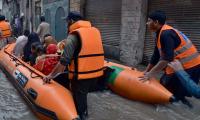Reopening of schools across the country as announced by the federal minister for education and professional training would not have been an easy decision. One expects that the decision-makers would have carefully examined costs of continued suspension as well as resumption of in-person schooling.
The most significant cost of continued suspension of in-person schooling is the learning losses endured by students across the country. The World Bank estimated the learning losses to be around 0.6 years of learning adjusted schooling. Further closures would mean more learning losses that Pakistan can ill-afford.
According to the TIMSS report published at the end of 2019, Pakistan ranked second to last in Math and Science achievement among all participant countries. A related concern would have been the scheduled board examinations for classes 9, 10, 11 and 12. These include local as well as foreign examinations including O and A levels.
Another cost of sustained school closure is the health of the private school sector – especially low fee private schools. The low-fee private school sector has grown tremendously over the last two decades to cater to the demand for education. Such schools provide greater accountability to parents and signal better quality education. While we do not have data that shows exact enrolment numbers in low-fee private schools across the country, estimates show a remarkable uptake of low-fee private schooling options. Several studies including LEAPS as well as ASER surveys show that students from these schools perform considerably better than counterparts from public schools. Covid-related closures hit these schools particularly hard as enrolments dipped significantly. Further closures would push a significant number of these schools out of the market and drive up fees at schools left in operating in the market, thereby creating a supply challenge.
On the other hand, the potential cost of reopening schools across the country is the unmitigated spread of the infection. The situation can quickly turn dire with schools becoming clusters of community spread endangering the lives and livelihoods of millions.
The paramount responsibility of the government(s) is to ensure that we avert the potentially devastating cost of reopening schools. This particularly pertains to strict adherence to SOPs across all schools in the country. The government(s) must ensure that necessary safety conditions are met in all schools and these conditions are sustained through effective monitoring. As schools were reopened in September, the federal government issued a list of guidelines for prevention against the spread of the infection.
The guidelines included strict adherence to behaviors known to mitigate against fast spread of the disease. These include face masks that are mandatory for all students (above the age of two years) and staff; handwashing with soap for twenty seconds at regular intervals, frequent use of hand sanitizer containing at least 70 percent alcohol. Education departments and in turn schools were directed to stock hygiene supplies that ensure adherence to guidelines and protocols outlined by the government. Unfortunately, the school reopening in September coincided with the gradual increase of daily Covid infections culminating in the second wave. The government(s) are expected to do better this time by allocating necessary resources to serious planning and robust execution to ensure strict adherence to SPOs at the school level.
The first step is to acknowledge that issuing guidelines is not enough. Ensuring access to necessary supplies at the school level is critical for effective adherence to the SOPs. Allocation of essential supplies including face masks, hand sanitizers, soaps, water tanks (in schools where there is no water supply) will require great effort. The data from Punjab shows what a steep challenge this undertaking is for the government.
According to the education census in the province, there are a total of 52,471 schools that enroll 12,587,154 students and employ 465,239 teaching and non-teaching staff. According to a conservative estimation, the monthly requirement for essential supplies should include 20 soaps and two large sanitizer bottles per school. Each student and staff member at every school requires at least five surgical masks per month. This means that in total there are at least 1,049,420 soaps; 104,942 bottles of sanitizer; and 65,261,965 surgical masks required every month in Punjab alone.
District-wise data on schools, enrolment, and staff can be used by the government to identify monthly requirements in each district. Market estimates of the cost shows that the Punjab government will likely need to spend Rs648 million per month to ensure adequate supplies in each public school across the province. The government will have to plan for the logistics as well as the financing of procurements. Once the procurements are planned and executed, thereby providing necessary conditions at the school level, the government will need to implement a monitoring system to oversee compliance.
In the case of Punjab, the real-time monitoring architecture can be expanded to include specific indicators concerning SOP compliance in schools. Data from real-time monitoring should in turn inform policy actions to address gaps on a monthly basis.
It is hoped that the provincial and federal governments can demonstrate the efforts required to ensure the health and wellbeing of students, teachers and staff across schools in the country. Once the looming threat of infections is managed in the immediate term, the decision-makers can then hopefully work to mitigate and eventually alleviate the costs of prolonged school closures in 2020.
The writer is an Islamabad-based researcher.
As usual, any such deal, aiming to resuscitate ailing economy, brings to fore urge and resolve to halt further...
A representational showing sticky notes on a board. — Unsplash/FileThere are some common themes from the lives...
Whether the Daanish Schools effort has been able to live up to its principles or not may be debatable
According to the federal government, last year 653,100 people experienced homelessness on a single night in America
Another advantage for Pakistan is the enhanced teledensity and internet penetration
Both media spheres need to dovetail in amplifying the urgency of addressing climate change at the local, national, and...







